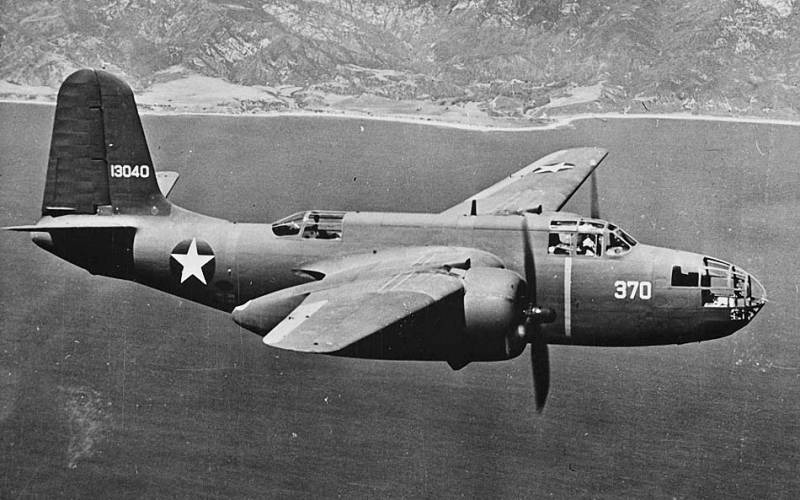Would you like to see this in-game?
Douglas A-20B Havoc
Hello everybody. I’d like to suggest the A-20B Havoc for the US aviation tree. I believe the A-20 series is currently underrepresented in War Thunder, so I’ve planned to suggest this and the other variants to help complete the family of this iconic light attack bomber.
In short, the A-20B was a less sophisticated evolution of the early A-20 models and was broadly equivalent to the DB-7A airframe. It was the first A-20 variant to enter full-scale mass production, with roughly one-third remaining in service with the US Army Air Corps and the other two-thirds delivered to the Soviet Union through the Lend-Lease program.
Description and History
In May 1940, anticipating the possibility of US involvement in the ongoing global conflict, President Franklin D. Roosevelt called for the production of 50,000 military aircraft as a precautionary measure. To support this massive undertaking, the government established the Defense Plant Corporation to finance and ultimately assume ownership of factories beyond what private industry could fund. For Douglas, this resulted in the creation of a new manufacturing facility in Long Beach, California, initially intended for the mass production of C-47 transports. However, plans shifted when Douglas was awarded a contract for 999 A-20B aircraft on October 2, 1940. The Long Beach plant would instead become a final assembly site for the A-20B models.
The A-20B was the first variant to receive a large-scale production order from the US Army Air Corps. Its armament was upgraded to .50 caliber machine guns, except in the ventral position, but its overall configuration marked a regression from the A-20 and DB-7B standards, instead more closely resembling the earlier DB-7A. Most notably, it reintroduced the stepped glass nose arrangement, fitted with a top-mounted escape hatch to improve crew egress during belly landings, an issue identified with previous under-nose hatches. It was the only A-20 variant in USAAC service to feature this stepped glazing.
Structurally, the A-20B differed in its manufacturing process. While the A-20A and DB-7B fuselages were built in two halves and joined along the centerline, the A-20B and DB-7A were assembled as a single unit. This was a method considered to be less efficient. Compounding this, the A-20B lacked self-sealing fuel tanks and adequate armor protection, limiting its combat suitability. As a result, only a limited number of A-20Bs saw service with the US Army Air Corps. While some were restricted to training and development roles, several A-20Bs in USAAF service were deployed to the Mediterranean Theater of Operations, where they saw significant combat in North Africa and Italy. A smaller number also took part in the Pacific War, notably in operations over Papua New Guinea.
The first A-20B was completed on February 24, 1942, and the last by February 1943. Of the 999 ordered, 665 were supplied to the Soviet Union under the Lend-Lease program. Additionally, eight A-20Bs were diverted to the US Navy, where they were redesignated as BD-2s, used as high-speed target tugs. The Navy, impressed with the performance of the earlier A-20A (designated BD-1), requested diversion of additional airframes from the Army order for Marine Corps utility units, leading to their transfer and reassignment under naval service.
Specifications
Douglas A-20B Havoc
Total Produced: 999
General Characteristics
Crew: 3 (Pilot, bombardier, and gunner)
Dimensions:
Length: 48 ft 0 in (14.63 m)
Height: 18 ft 1 in (5.51 m)
Wingspan: 61 ft 4 in (18.69 m)
Wing Area: 465 sq ft (43.2 sq m)
Propeller:
Type: 2 x 3-bladed Hamilton Standard Hydromatic
Diameter: 11 ft 3 in (3.43 m)
Powerplant:
Type: 2 x Wright R-2600-11 Double Cyclone air-cooled radials with 2-speed superchargers
Power Output:
1,600 hp (1,193 kW) each @ takeoff (3,200 hp / 2,386 kW total)
1,275 hp (951 kW) each @ 12,000 ft (2,550 hp / 1,902 kW total)
Fuel Capacity: 390 US gal (1,476 L)
Weight:
Empty: 14,830 lb (6,727 kg)
Gross: 21,000 lb (9,525 kg)
Max. Takeoff: 23,800 lb (10,795 kg)
Flight Performance
Power-to-Weight Ratio: 0.15 hp/lb (0.25 kW/kg)
Speed:
Cruising: 278 mph (447 km/h)
At Altitude: 350 mph (563 km/h) @ 12,000 ft (3,658 m)
Landing: 95 mph (153 km/h)
Wing Loading: 45.16 lb/sq ft (220.5 kg/sq m)
Climb Performance: 5 minutes to 10,000 ft (3,048 m)
Service Ceiling: 28,600 ft (8,717 m)
Range: 825 miles (1,328 km) with 1,000 lbs (454 kg) of bombs
Engine Ratings
Takeoff:
Military:
Continuous:
Armament
Guns:
2 x 0.50-in (12.7 mm) forward-firing M2 Browning machine guns in the nose (200 rpg; 400 total)
Turrets:
1 x flexible 0.50-in (12.7 mm) MG in the dorsal turret (200 rds)
1 x flexible 0.30-in (7.62 mm) MG in the ventral tunnel (500 rds)
Bombs (Max 2,000-lb Load):
Internal:
10 x 100-lb
2 x 325-lb depth charges
4 x 300-lb
4 x 250-lb
1 x 500-lb
1 x 1,000-lb
External:
2 x 500-lb
2 x 325-lb depth charges
4 x 300-lb
4 x 250-lb
4 x 100-lb
Torpedo: 1 x Mk. 13-1 or Mk. 13-2
Related Suggestions
Havoc Family
Nighthawk Family
Sources
BD-2 Havoc Performance Data (1 May 1943)
EE-393 Wartime Tactical Planning Characteristics & Performance Charts (20 July 1943)
A-20 Havoc in Action, Aircraft Number 144 (1994)
Douglas A-20 Boston-Havoc, Warpaint No.32 (1999)
Douglas Havoc and Boston: The DB-7/A-20 Series (2004)
A-20 Havoc in Action, David Doyle (2015)
Douglas A-20 Havoc - Wikipedia Douglas A-20 Havoc Douglas A-20B Havoc
Thank you for taking the time to read my suggestion! 😃
1 Like
Need an early A-20 to larp
1 Like
+1 wonder how gajin would try to fit all of these variants
1 Like








